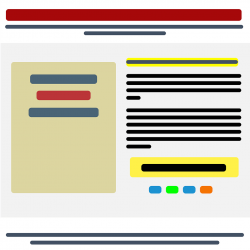You may have the most amazing idea for your marketing materials, but trying to convey those ideas to a designer can be tricky. Some of the things we’ve heard are along the lines of “Can you make it pop?” or “Make it more summery”. And while you may know what you mean by that. I can almost assure you, it will differ from the opinion of the designer.
Designers have spent years honing their craft in order to make pretty much anything that a client wants. The only problem is these ideas need to be communicated clearly for the designer to know what they are making for you. If you say something like “Make it pop”, it can lead to a misunderstanding. But how can misunderstandings be avoided when it comes to working with a designer?
One of the easiest ways of doing this is to learn how to speak the language of the designer.
Meet up before you start the project
Designers can’t reach into your mind to clearly see your idea. They need to hear what you want and what you’re expecting to achieve, as well as needing guidance along the way.
To help give them direction, meet up with them before the start of each new project and discuss your vision, even if it's a Zoom meeting or similar. Be clear with your goals and admit if you have anything you’re still waiting for information about. Then ask the designer if they need anything else from you, any and all information about the project will be gratefully received.
This meeting can also be used to plan out projected timings for the project. Underestimating timelines can lead to further problems with the project as a whole. So having a clear idea of how long something will take can help keep everything on track.
Also, before the meeting, do some research on the target market for the project. Your designer will need to know not just about the brand, but about who you’re going to be targeting, how people interact with your business, and if there are any promises that you need to communicate.
This may seem like information overload, but the more information your designer has, the less they’ll need to ask you about to reach the end goal. If you've worked together before, it's likely that the designer will already have a good understanding of your business, but it doesn't hurt to clarify these details.
Over-communicate whenever you can
This is vital if you’re working with a new designer who doesn’t yet know your brand or you. Make sure you ask every question you can think of, don’t assume the designer knows anything. If you need to, get them to clarify points that have been made and make sure they have everything they need to bring your idea to life.
This may seem tedious, but any bit of information, no matter how small, can have a big impact on your final design. Even something as small as “make the green brighter” can change the direction of the whole design, so needs to be communicated. You might think that things like the exact colouration can be left until all the parts are in place and that they can be tweaked towards the end of the project, but there may be other elements of the design which are based on the colours (which would then also need to be changed).
To help with communication, make sure you have set up preferred ways of communicating, this can ensure that everyone is on the same page at the same time. It's not uncommon for email to be used - this is a great way to send attachments to each other, and it can often be easier to communicate than over the phone.
Give constructive feedback
Giving clear and constructive feedback is key to seeing an idea take shape. Just saying “I don’t like it” doesn’t help anyone, it leaves the designer in the dark as to what isn’t liked about the design and what needs to be improved. The same can go for “Make it cleaner” if you think about it, that comment actually doesn’t make much sense, it’s not been rolled in dirt, so how can it be cleaner?
Your designer won’t know what to do with that information, so will need to ask follow-up questions, whereas you could have just stated what was wrong with it in the first place. What may be "cleaner" to one person can be different to another.
Don’t be afraid of hurting your designer's feelings, they would rather know exactly what was wrong with the design than be left guessing what they should do to make it better for you.
Also, don’t just dictate what should be changed, ask for feedback and whether your designer thinks it’s a good idea. They’re the expert, if they think something is a bad idea, they’re probably right. But remember that it’s your product and needs to fit what you want, so don’t be afraid to put your foot down if they want to change the main part of the design.
Summing Up
If you need to hire a designer to carry out work for you, then don’t be afraid of clear communication with them. At the end of the day, they’re trying to help make your idea come to life. To do that, they need to have clear communication from you.





